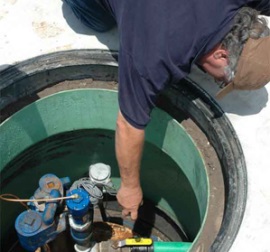
by Brianna Crandall — June 26, 2015—The U.S. Environmental Protection Agency (EPA) is strengthening the federal underground storage tank (UST) requirements to improve prevention and detection of petroleum releases from USTs, which are one of the leading sources of groundwater contamination. Undertaken after extensive collaboration, the Agency’s action will strengthen existing requirements and help ensure all USTs in the United States meet the same release protection standards.
Secondary containment and operator training requirements of the Energy Policy Act of 2005 will apply to USTs on tribal lands. In addition, these requirements improve EPA’s original 1988 UST regulation by closing regulatory gaps, adding new technologies, and focusing on properly operating and maintaining existing UST systems, says EPA.
According to the Agency, underground storage tanks are located at hundreds of thousands of facilities across America. Both marketers and nonretail facilities own USTs. Marketers include retail facilities such as gas stations and convenience stores that sell petroleum products. Nonretail facilities include those that do not sell petroleum products, but may rely on their own supply of gasoline or diesel for their fleet of taxis, buses, limousines, trucks, vans, boats, heavy equipment, or a wide range of other vehicles.
The revised requirements include:
- Adding secondary containment requirements for new and replaced tanks and piping;
- Adding operator training requirements;
- Adding periodic operation and maintenance requirements for UST systems;
- Removing past deferrals for emergency generator tanks, airport hydrant systems, and field-constructed tanks;
- Adding new release prevention and detection technologies;
- Updating codes of practice; and
- Updating state program approval requirements to incorporate these new changes.
States and territories primarily implement the UST program. Many states already have some of these new requirements in place. For others, these changes will set standards that are more protective.
In developing the final UST regulation, EPA reached out extensively to affected and interested UST stakeholders. EPA carefully considered the environmental benefits of the UST requirements, while balancing those with the potential future costs of compliance for UST owners and operators. For example, EPA says it is not requiring owners and operators to replace existing equipment, but rather is focusing on better operation and maintenance of that equipment.
More information about this regulation is available at EPA’s Underground Storage Tanks regulation Web site.




